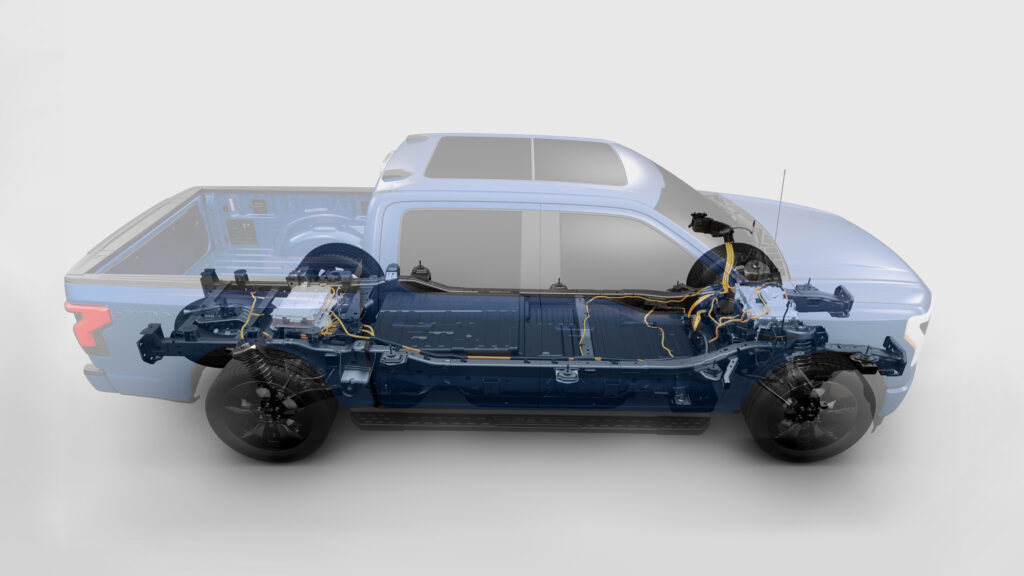
Despite industry-wide inventory constraints and overall slow new-car sales growth throughout the year, sales of electric vehicles in the US surged to hit a new record in 2021. At the same time that overall new vehicle sales were up just 3.4%, 535,000 electric vehicle were sold in America, a jump of 72% over 2020.
In just two years, electric vehicle market share has risen from under 2% to nearly 5% in the United States. It’s not just happening in America. Worldwide, electrified sales reached 8.6% in 2021 (that’s 108% growth since 2020). For perspective, EV sales were merely science experiments in 2010, making up just 0.01% of global automotive sales at the time.
You don’t need to be a math wizard to see the trend. The wave is coming, and industry analysts know it. Here’s where the data points for 2030 and beyond.
2011 to Present: Humble Beginnings
After a false-start in the 1990s, the Nissan Leaf and Chevrolet Volt hit the American market in 2011. At the time, the only two plug-in cars on the market had what were considered to be solid sales numbers. In the US, 2011’s 17,000 electric vehicle sales grew to 96,000 by 2013 when the first Tesla Model S landed in customer’s hands.
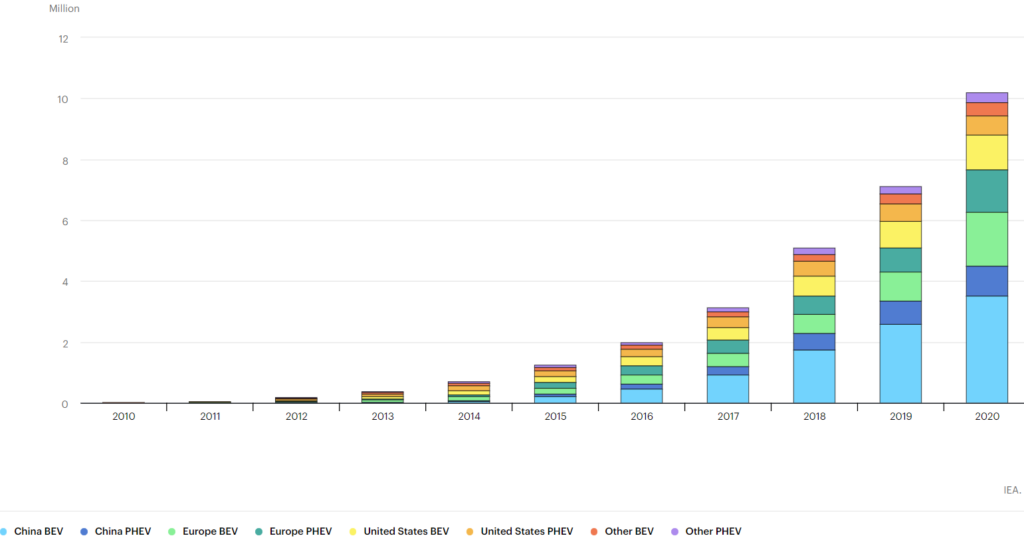
In 2015, global EV sales surpassed half a million for the first time. It would be years before market share reached 1% in the US. The bug-eyed Nissan Leaf led EV sales for years on end. In a transfer of power that few saw coming at the time, Tesla overtook Nissan, Chevrolet and BMW as EV sales leader in 2015.
2017 saw electric vehicles screech past 1% of US market share, however it was the following year that everyone remembers. 2018 turned out to be an unexpected banner year for electric vehicles. Industry analysts hadn’t seen the 81% jump in electric sales coming, but it happened. What changed? Tesla released the popular and more affordable Model 3 sedan, and it was selling like hotcakes.
The pandemic brought everything screeching to a halt just as Tesla was introducing the even more popular Model Y crossover. Still, all-electric sales rose 11% in 2020. In the US, EV market share had reached 1.7%.
2021 Electric Vehicle Sales
Electric vehicle sales more than doubled in 2021, reaching 9% market share globally and 4.5% in the US. It was yet another year that analysts and industry experts called a turning point. Where do we go from here? Follow the money. Automaker investments in electric vehicles now total over half a trillion dollars. Some are even shuttering their combustion engine development arms.
Recent surveys of Americans show that nearly 40% are seriously considering buying an electric vehicle for their next purchase. Combining public sentiment with many industry data points and trends, the momentum is growing for electric vehicle dominance. But when? Here’s where the brightest minds in the automotive industry think EV sales are headed in the decades to come.
Electric Vehicle Sales Forecasts: Global Outlook
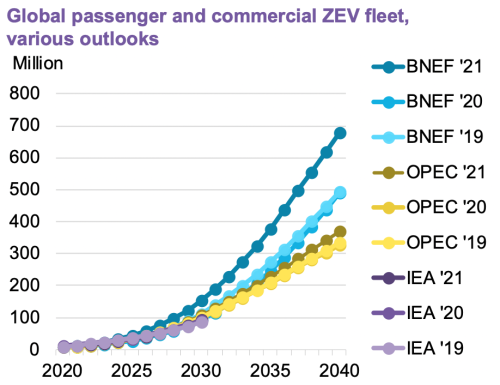
Most industry analysts have revised their EV sales forecasts upwards. Bloomberg NEF has raised its own forecast for the global ‘zero-emissions vehicle’ fleet in 2040 from 495 million vehicles in its 2019 forecast to 677 million in its 2021 Electric Vehicle Outlook. Bloomberg analysts predict that even with no further incentives for electric vehicles, EVs will make up 88% of passenger vehicle sales in the year 2050.
The International Energy Agency (IEA) raised its 2030 battery electric vehicle forecast by 7% since 2019. For 2030, the Net Zero Emissions by 2050 scenario projects 300 million electric cars on the road. This would be considered a high-end scenario that forecasts electric vehicle market share exceeding 60% of new car sales globally.
The US Energy Information Administration predicts that light-duty electric vehicles (including plug-in hybrids) will grow from 0.7% of the global fleet in 2020 to 31% in 2050, reaching 672 million vehicles.
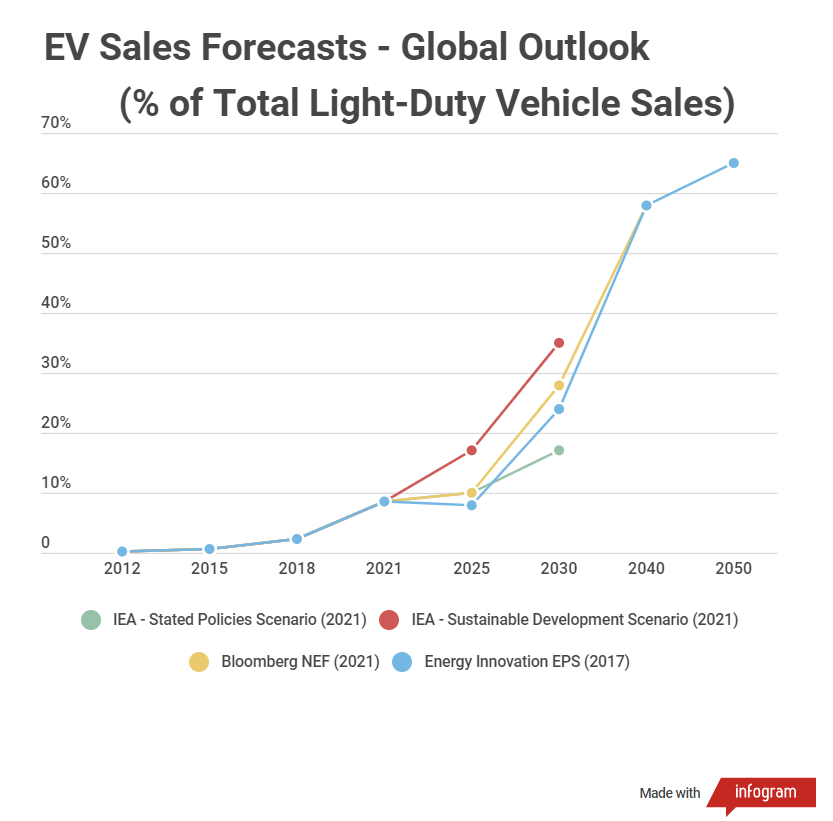
Automakers are moving up their timelines
Disruption creates opportunity, and automakers seem to be harnessing the disruptions caused by the pandemic to accelerate their transitions to EVs. Ford will only sell electric cars in Europe from 2030. Overall, Ford expects 40% to 50% of its global vehicle volume to be fully electric by 2030.
General Motors plans to offer only electric light-duty vehicles by 2035, and is prepared to electrify everything from the entire Cadillac lineup to the top-selling Chevrolet Silverado.
Volkswagen aims for 70% electric car sales in Europe, and 50% in China and the United States by 2030. Stellantis wants ‘low emissions vehicle’ sales to reach 70% in Europe and 40% in the United States in 2030. Volvo will only sell electric cars starting in 2030.
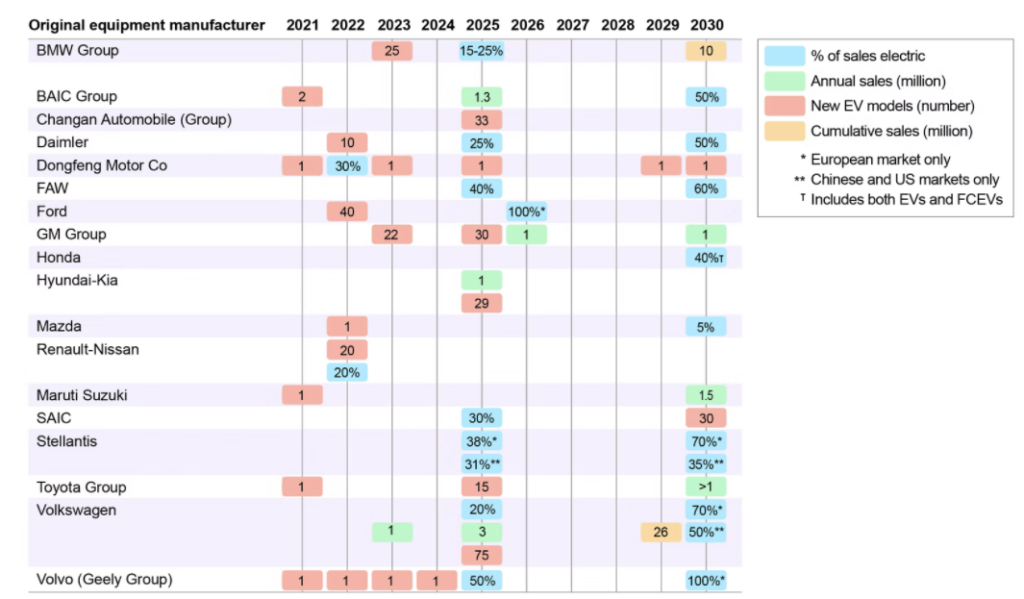
Overall, the IEA says that announcements from global automakers will translate to cumulative light-duty electric vehicle sales of 55 to 72 million by 2025.
OPEC’s Massive Miss
The world’s largest oil cartel severely underestimated the adoption of EVs. The Organization of Petroleum Exporting Countries (OPEC) issued a pessimistic forecast in their 2015 World Oil Outlook. OPEC believed that 4.7 million battery electric vehicles would be on the road in 2040.
They were wrong by a long shot. The global fleet of electric vehicles hit 4.7 million in 2020, meaning OPEC’s 2040 scenario arrived 20 years ahead of schedule. OPEC has still only raised its 2040 estimate for the global electric and fuel cell vehicle fleet by 11%.
Loren McDonald of EVAdoption.com is an electric vehicle industry expert with decades of experience in the automotive industry. In his latest EV adoption forecast, McDonald expects electric vehicle sales to reach approximately 29.5% of all new car sales in 2030. This forecast calls for a more than six-fold increase over the 4.5% EV market share in 2021. This would also see sales increase to 4.7 million from 535,000 in 2021.
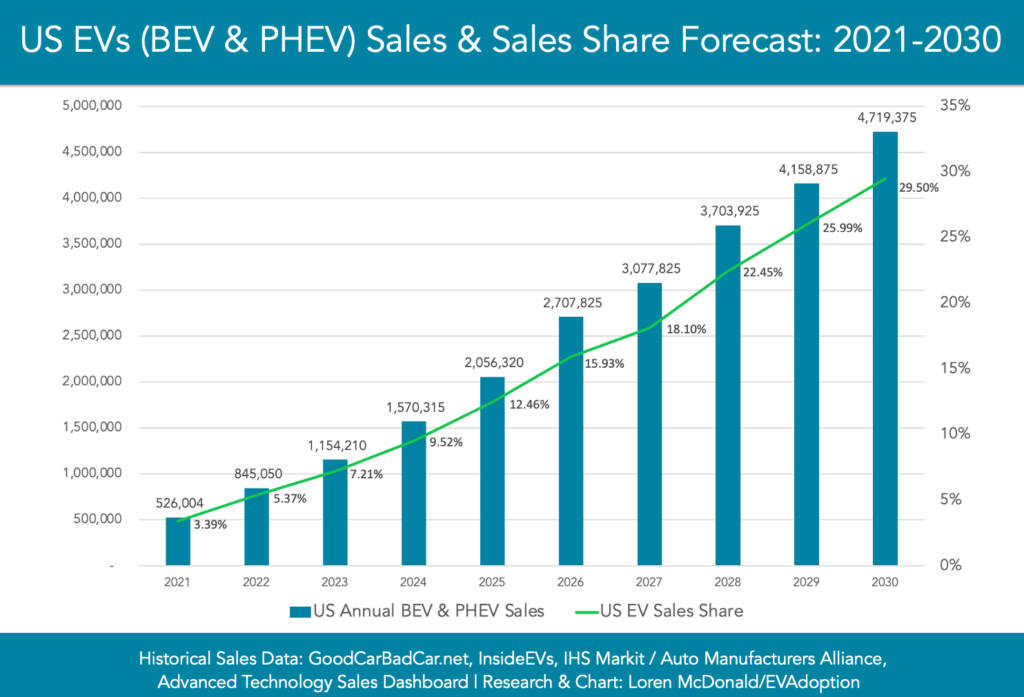
In the US, state-level targets to phase out sales of internal combustion engines now cover a quarter of auto sales in the country. There is no nationwide phase-out target like exists in many other countries. Sales trends and manufacturer commitments indicate that at this point, the transition to EVs is happening on its own.
CarEdge’s Take – Remaining Uncertainties
Although the EV takeover is looking more and more likely, a few bottlenecks, engineering challenges and policy uncertainties loom over the optimism of industry forecasts. In the United States, the $7,500 federal EV tax credit and dozens of state programs incentivize the purchase of electric vehicles. If these incentives were to disappear, how attractive would an electric vehicle purchase be for the average consumer? The most affordable Tesla remains well over $40,000, and you can count the electric models under $35,000 on one hand.
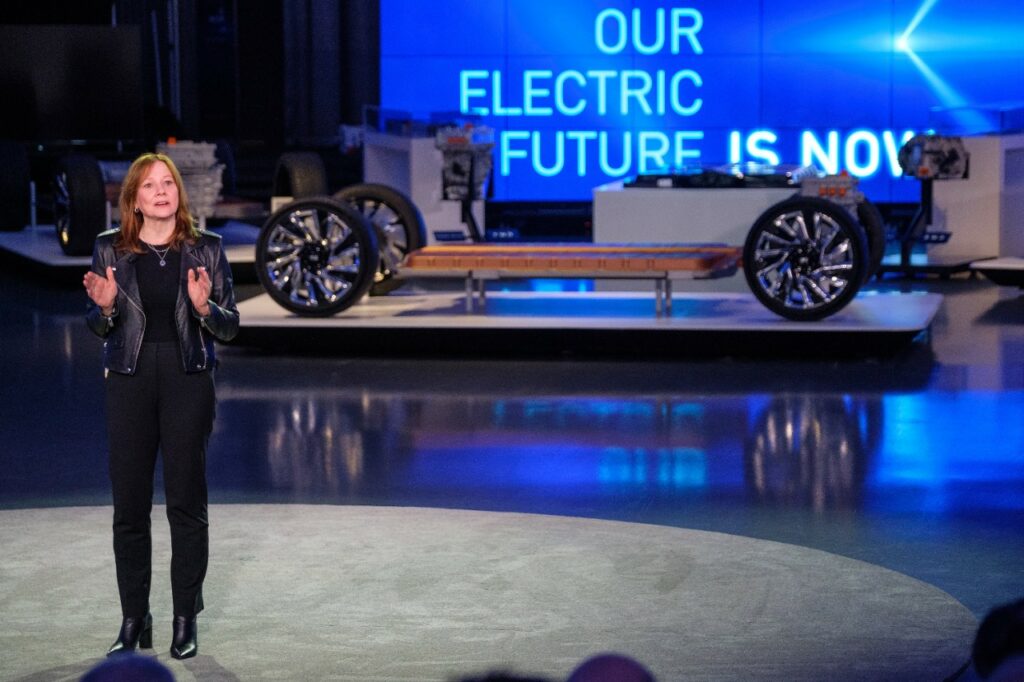
There also remains uncertainty throughout the electric vehicle supply chain. For instance, lithium and other rare earth metals are in extreme demand not only in the US, but in other electric vehicle manufacturing hubs, such as China. And then there’s batteries. Even Tesla with the most technologically advanced battery chemistry and Battery manufacturing plans can’t seem to keep up with their demand for electric vehicles.
Legacy automakers have bold plans to meet their coming battery needs. General Motors is launching the game-changing Ultium battery and powertrain, and other automakers have similarly ambitious plans. They know that if there are no batteries, there will be no electric vehicle future. Could we be talking about battery shortages instead of chip shortages in just a few years’ time?
We have a charging problem

In the United States, access to electric vehicle charging stations is limited to affluent urban centers and sporadic highway sites. Over 80% of charging happens at home, but peace of mind matters to drivers. America needs more chargers.
The federal government, private enterprise and utilities are teaming up to plan out the future of the National Charging Network in the United States. If successful, a National Charging Network would bring fast charging to all interstate highways in the United States, rural areas and underserved urban areas. The mass adoption of electric vehicles will likely hold off until charging gets much easier in America.
What do you think about electrification?
Are forecasts for electric vehicle adoption overly optimistic? Or might they be under estimating the pace of EV adoption in America and abroad? The 2020s promise to be a time of change and adaptation for automakers and consumers alike. Here at CarEdge, we’ll be following the latest developments closely.










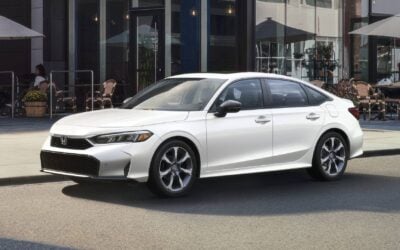


0 Comments